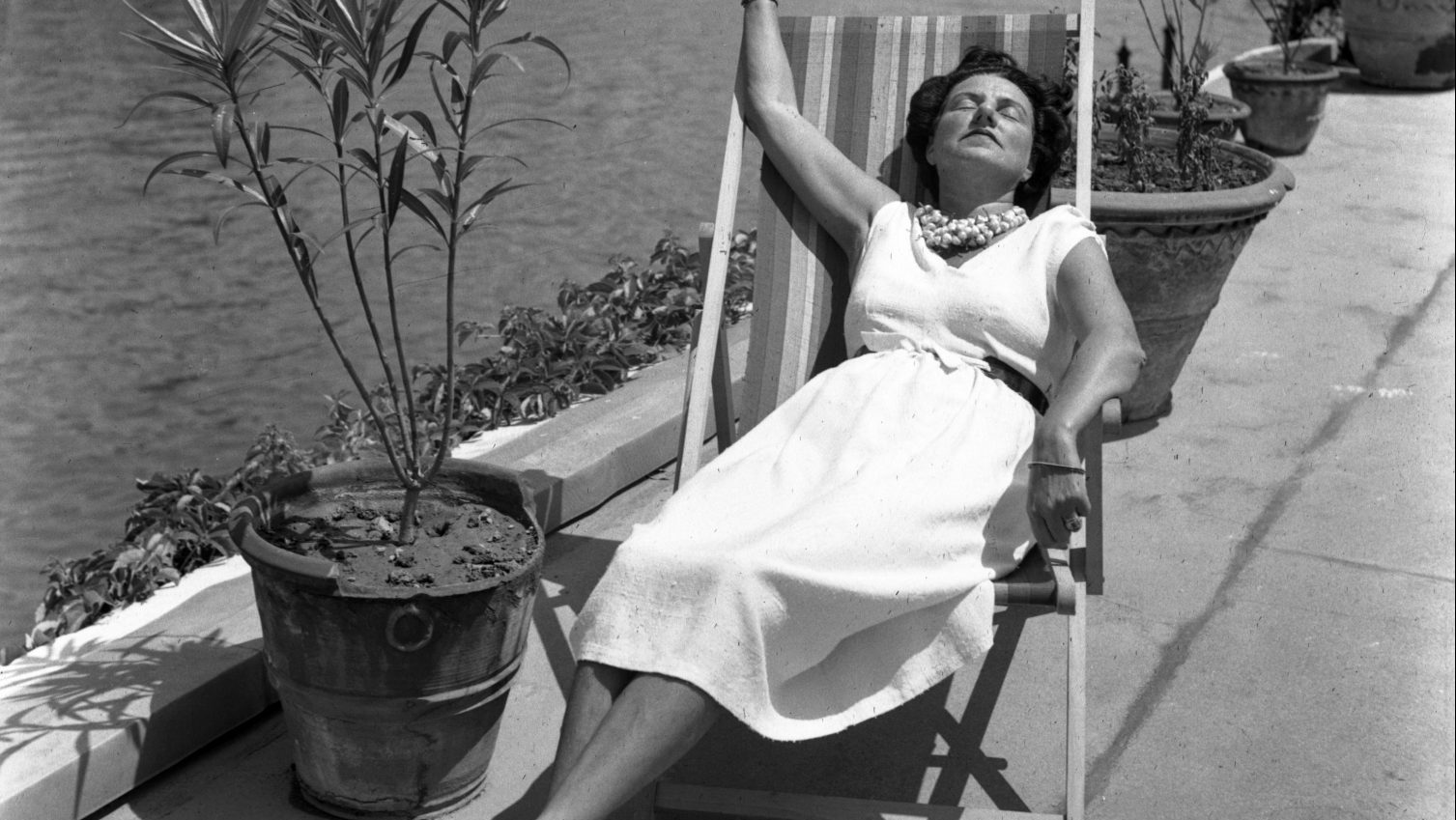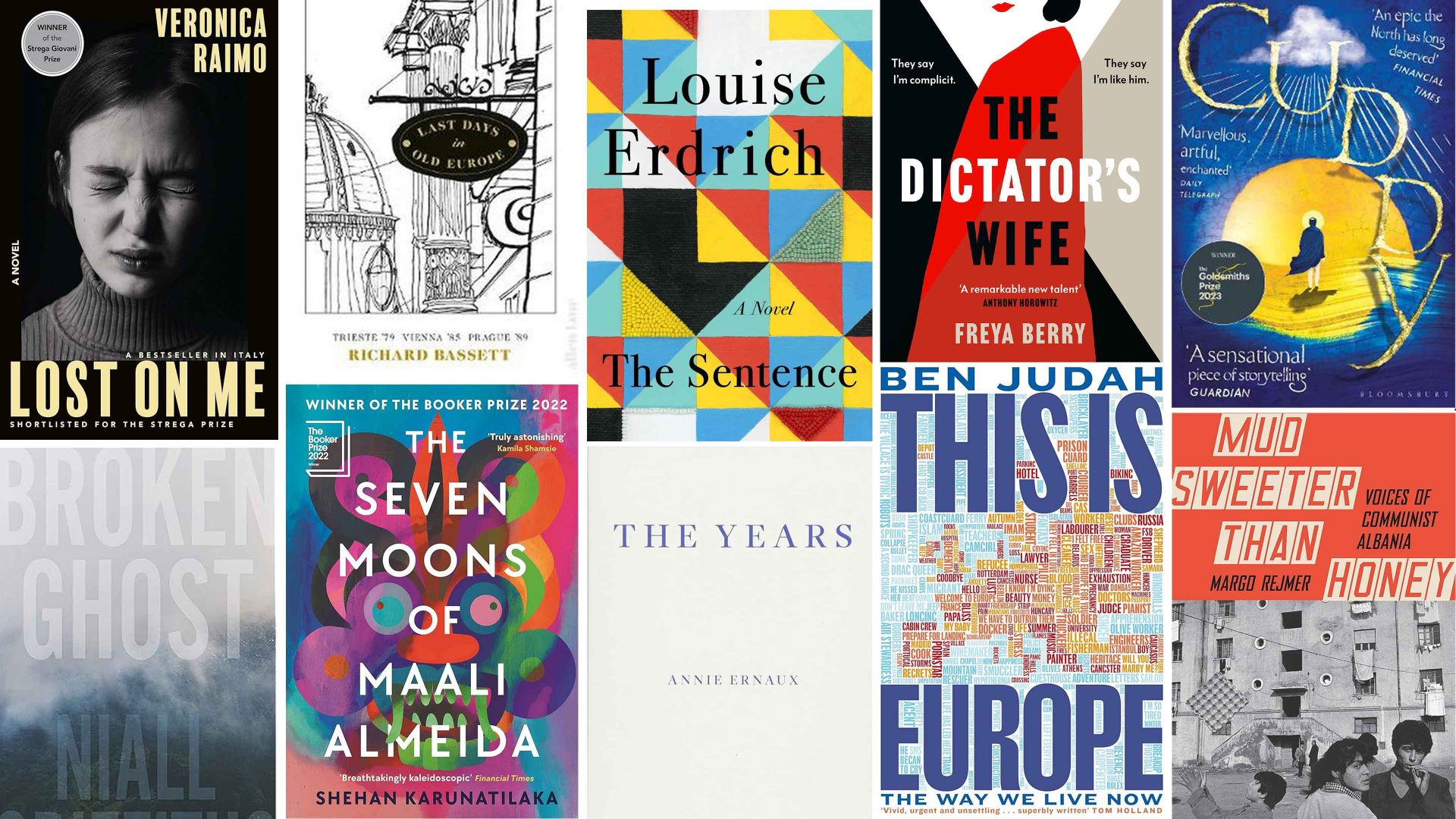When in 1934, the celebrated collector and patron of modern art Peggy Guggenheim bought a cottage in the countryside on the Hampshire-Sussex border, she was at rock bottom. “Soon after I took this step,” she wrote in her memoir Out of this Century, “I decided to commit suicide.”
In fact, the five years that Peggy spent at Yew Tree Cottage, near the market town of Petersfield, were the prelude to the life for which she is now famous. It was here that she resolved to buy a piece of art every day, beginning the collection of 20th-century art that, housed in her 18th-century Palazzo Venier dei Leoni, is among the most visited museums in Venice.
Peggy’s father, Benjamin Guggenheim – brother of Solomon, who later established the Guggenheim Museum on Manhattan’s Upper East Side – died on the Titanic in April 1912, and her life and character were of correspondingly cinematic proportions. She lived across continents, her address book a Who’s Who of the cultural figures of her time. But her life was marked by tragedy, and 15 years after the sudden death of her father, her sister Benita died in childbirth.
Her divorce in 1932 from Laurence Vail, father of her children, Sindbad and Pegeen, was difficult, and the subsequent sudden death of her lover, John Holms, two years later brought her as low as she had ever been.
In the chaos of grief, the countryside “gave her the opportunity to rethink what she was doing,” says Louise Weller, curator of Peggy Guggenheim: Petersfield to Palazzo at the Petersfield Museum and Art Gallery until October 5. “It was from there that she looked to opening her gallery, and from that she became the art collector that we know today.”
She was introduced to the South Downs by the publisher Douglas Garman, a friend of Holms’s whom she had met, briefly, in 1933. They seem to have fallen for each other almost on sight – Garman “was a real man and John was more like Christ or a ghost”, she wrote, and in one of her customary episodes of clairvoyance, Peggy had “a strange premonition that in one year I would be his mistress”.
When Holms died suddenly in a botched operation, Peggy’s grief was raw and complicated. “I knew that I would never be happy again,” she wrote. Holms had been a controlling partner, and his death was “as though I were suddenly released from a prison. I had been John’s slave for years and I imagined for a moment I wanted to be free, but I didn’t at all.”
Sure enough, it was Garman she turned to after Holms’s death. Desperate to get away from London with all its past associations, she rented Warblington Castle in Langstone, Hampshire, for the summer of 1934, a few miles from the house in South Harting that Garman had bought for his mother, who lived there with his daughter, Debbie.
By the end of the summer, Pegeen had become good friends with Debbie and her cousin Kitty Garman (later an artist and the first wife of Lucian Freud), and wanted to go to school with them in Petersfield. Peggy settled on an Elizabethan cottage on the road between South Harting and Petersfield, an arrangement convenient for the school bus, but also for Garman, who continued to live with his mother nearby.
Peggy’s depression was deep, and the cottage was so horribly cold that she wore fur gloves in bed, and carried oil burners from room to room. The chimney smoked, and the water supply was unreliable. Still, she loved the Downs, and the garden was beautiful. When, eventually and somewhat reluctantly, Garman moved in with his daughter, he set about improving the house, inside and out.
Peggy seems to have found considerable satisfaction in the domestic role she now played as mother once again to two children. The terms of her divorce had left her son in the care of his father, but she was dedicated in her mothering of Debbie and Pegeen, making costumes for school performances, and nursing coughs and colds: “I seemed to spend weeks administering inhalations and medicines, taking temperatures and reading to sick children”, she wrote.
Diligent research by curator Louise Weller has uncovered many references to Peggy’s life in Petersfield, where as an unmarried American she must have attracted much curiosity. A court report in the local newspaper records a fine of £1 issued to “Marguerite Guggenheim, Yew Tree Cottage” for “using an unlicensed motor-car”; there are reports of Pegeen and Debbie’s dance recitals in the town; Sindbad’s cricketing exploits during school holidays were also reported in the local news.
In time, Garman’s growing involvement with the Communist Party and his activities as chairman of the Petersfield Labour Party became newsworthy, notably in July 1937, when he held a meeting in the town square, urging the British government to intervene against the fascists in Spain.
Garman’s apparently all-consuming political activism was a contributor to the end of his relationship with Peggy, early in 1937. “I think my life is over,” she said to her friend Emily Coleman, finding herself truly single for perhaps the first time in her life.
She resolved to distract herself, encouraged by her old friend Peggy Waldman, who suggested that she might gain “a more painless perspective if you had another active interest besides, and particularly one that brought you into contact with stimulating people.”
Exactly what that might be was not immediately obvious: though the Guggenheim name is synonymous with extraordinary wealth, Peggy’s funds were not unlimited and she dismissed the idea of opening a publishing house on the grounds of expense.
In January 1938 she opened Guggenheim Jeune, a modern art gallery in Mayfair. Peggy’s passion was for old masters, and her new venture was an opportunity to immerse herself in a new and previously unknown sphere, in which she was fortunate enough to have none other than Marcel Duchamp as her guide.
With Duchamp came access to the Paris avant-garde, and his counsel inevitably resulted in exhibitions built around abstraction and surrealism, the two dominant strands of modernism at that moment. For Peggy, it was transformative, and to Emily Coleman she wrote: “To live without love & a man & to be happy is almost too good to be true. […] I am now in Paris to get artists for this wonderful Gallery called Guggenheim Jeune.”
In England, she stayed on at Yew Tree Cottage, the small scale of which is reflected in the art she acquired for it, including a miniature Reclining Figure by Henry Moore, on display in the exhibition. Her first purchase was a small bronze sculpture by Jean Arp, a tactile work inspired by pebbles, that could be endlessly re-arranged and fitted together – a story without an ending.
Arp was among the artists featured in Guggenheim Jeune’s now famous exhibition of contemporary sculpture, and he stayed with Peggy at Yew Tree Cottage for a week, where he proved “very domestic about the house. … He served me breakfast every morning and washed all the dishes.”
Like Peggy, Arp enjoyed walking on the Downs and visiting Sussex churches. “He went back to Paris with a porkpie hat and a bread box under his arm”, she wrote: “He knew only one word of English, ‘candlesticks’. His vocabulary did not increase during his stay.”
Among the others selected for the show, Henry Moore was the only British sculptor. Works by Brancusi, Henri Laurens, Sophie Tauber-Arp, Alexander Calder, Antoine Pevsner and Raymond Duchamp-Villon were sent over from Paris by Duchamp, but held up at British Customs where doubts were raised over the paperwork identifying them as works of art. The ensuing uproar in the press – and a mention in parliament – brought welcome publicity, while also demonstrating Britain’s woefully parochial attitude to contemporary art.
Peggy’s fame rests as much on her prodigious sex life as her activities as a patron and collector, and there was often considerable overlap between them, her professional connections often leading to sexual adventures that in her memoirs she describes as if they were simply a matter of course. The Surrealist artist, collector and convenor of people Roland Penrose insisted on tying women’s wrists in bed, she explains: “It was extremely uncomfortable to spend the night this way, but if you spent it with Penrose it was the only way.”
A number of her liaisons were of really lasting significance, and in the summer of 1938, Peggy held an exhibition of the French Surrealist painter Yves Tanguy, the wooden ring he made her from a tree in the garden at Yew Tree Cottage a sign of the deep bond developing between them.
Peggy “adored” Samuel Beckett, whom she met in Paris at the end of 1937, and who came to stay at the cottage. Beckett encouraged Peggy’s focus on the art of the day, “as it was a living thing”, and it was in order to please him that she gave an exhibition to his favourite Dutch artist, Geer van Velde, discreetly buying several works herself in order to disguise the extent of its failure.
Though Peggy’s tastes and choices were often guided by others, and often men at that, she made her own judgements too, and was keen to support female artists. Among them was the Danish Surrealist Rita Kernn-Larsen, whose Sycamore Leaf, 1939, is reminiscent of the bizarre, sinister dreamworlds conjured by Leonora Carrington, who made her first-ever sale to Peggy in 1939. John Tunnard was another of her discoveries, “a marvellous man” who looked like Groucho Marx, whose work reminded her simultaneously of Kandinsky, Klee, and Miró.
By 1939, Peggy had shifted her focus to a new project, feeling that the big losses she was making at Guggenheim Jeune would be put to better service in the creation of “something worthwhile”. She closed the gallery in the summer, having decided to establish a modern art museum with the critic and then editor of the Burlington Magazine Herbert Read as her principal adviser.
In August 1939, Peggy drove to France for a holiday before the serious work of the museum began in the autumn, “never dreaming I was saying goodbye to Yew Tree Cottage for ever”. Within weeks, Europe was at war, and Peggy set to work in Paris, living by her new motto to “buy a picture a day”.
As the Nazis neared Paris, she fled to the south of France, from where she returned to New York with Max Ernst. In October 1942, Peggy was finally able to open her museum and gallery, Art of This Century.
The interior was designed by the modernist architect Frederick Kiesler, and embraced the Surrealist aesthetic that dominated so much of the collection. There were curved walls, and paintings mounted on pulleys: there were even paintings on a conveyor belt. In these few years, Peggy made a massive impact in America, propelling Jackson Pollock to stardom in 1943 when she gave him a contract, and his first solo exhibition.
But by the time the war had ended, she was ready to go back to Europe, this time settling in Venice, where in 1949 she bought the unfinished palazzo that is now home to one of the world’s greatest collections of 20th-century art.
Peggy sowed the seeds for her grand achievement in the more modest surroundings of southern England, and perhaps she had this in mind in one of her final interviews, three years before her death in 1979. “I have been in love with Venice for 50 years. If I didn’t live here I would live in the English countryside.”
Peggy Guggenheim: Petersfield to Palazzo at the Petersfield Museum and Art Gallery until October 5




